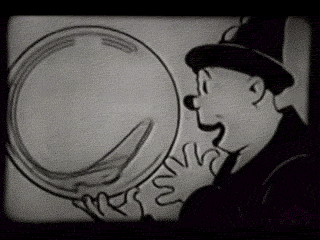What’s new at Zystrix? Read on…
October 16, 2023
Halloween is one of my favorite days of the
year, and this is the Halloween Dance issue.
Last year I talked about the 11 essential audio
mixing tips and tricks and treats, so I’m going
to re-visit that theme here because it doesn’t go
out of style. Download it below. Dangerous
Neighbors also has another solo piano video for
your entertainment called Enemies and Allies. So sit back and
relax. Welcome to Zystrix, the heartbeat of the universe. Where
creativity and free-thinking have more value than conformity.
Dangerous Neighbors
This new neo-classical
solo piano tune,
Enemies and Allies, has
been made into a video.
The tune is about
choosing sides,
gathering
allies, and
preparing for
the inevitable
battle.
11 Essential Audio
Mixing Tips and Tricks.
How to Mix Audio Like a Pro.
Secrets to A
Professional Audio Mix.
Back in my old days of mixing and bouncing tracks on a
two-track tape machine it was basically a microphone or
two and learning how to get the most out of tape. There
was no such thing as being able to afford a mix-down
deck. But now there’s a lot of musical competition in the world –
engineers have come out of the woodwork. And they have gotten
pretty clever in their ways and there are now a number of excellent
mixing styles for all genres. So if your tracks don’t sound like they
can compete with your favorite commercial band’s sound then your
material just won’t make the grade. It’s as simple as that. So listen
to your mixes and compare, compare, compare to the commercial
stuff. The record store (or wherever you get your music) is your
oyster.
#01. Clean Tracks are Bliss
This first tip covers a lot of ground and some of it may seem
a little overly obvious but it is worth mentioning. Ask your
band to give you some of their favorite recordings in
advance so you know what sound you’re going after. This
puts everybody involved on track, so to speak, and it’s
possible to focus more on the end result for a better sound,
more focus, and it also saves time by not later arguing over
details that may be too late to change. And by doing this you
preserve the projected overall tonal balance. On another
note (yet another metaphor), your beautiful mix will always
be dragged down by the worst sounding track. So make
sure all tracks can hold their own. Never try to fix it in the
mix – fix it now. Try to keep up with problems as they occur.
You can start by making sure your recording levels are right
before the recording begins. Digital distortion is very difficult
to fix (a Sans Amp helps) and it just makes more sense to
avoid it in the first place. Another thing that helps clean up the mix,
unless it’s a bass guitar or bass drum, is to roll off the low end on
the finished tracks. (NOTE: Some people call it using a High Pass
filter but I hate that term, it makes engineering sound like a football
game.) There’s no need for sub bass frequencies on cymbals,
reverb, guitars, voices, and so on – cleaning up all that extra
unnecessary bass gets rid of mud in the final product. So does
using noise gates or simply cutting off unnecessary stuff on the end
of a track (stem). Also, In the final mix erase all frequencies at or
below about 24-28 cycles per second. This makes for better
mastering. And they don’t do any good and just make an amplifier
work much harder for almost nothing. Make all the lows mono – I
usually shoot for anything below about 200 cycles or so. Use a
gate on noisy tracks or re-record the track correctly. Nowadays
there are gates that are noise specific like the X-Noise Stereo by
Waves and these work pretty good for problem tracks. Simply loop
the problem noisy area and let the noise analyzer sample it and
then use that as a noise gate template. However, mixing cannot fix
everything and it may be an asset to know when a recording is too
far gone and just cannot be fixed or salvaged. Some bands have
brought me something they did and asked me to make it work.
Unfortunately I had to break the news to them that it’s just too far
gone. Also, and I know it’s boring, but solo every track looking for
any sonic issues. You (and your clients) will be glad you did, and
you’ll get repeat business and you’ll look like a star. And another
note, and this may seem a little too obvious, but always use 24 bit
recording to preserve the dynamic range. Never ever try to
squeeze the largest amount of time out of your hard drive by using
anything else. If your client can’t play 24-bit files simply copy and
dummy the mix down to 16-bit for their listening pleasure. Voila.
#02. Always Mix to Mono
Always. Back in the day I ran two mixes; one was stereo
and one was mono. This method checks for phasing issues
(like a guitarist who needs every speaker he ever owned
mic’ed up at the same time). Using too many cabinet
simulators can give phasing problems. The drum over-heads
can be a phasing issue. Use a tape measure from the center
of the snare drum to equal distance from the left and right over-
head microphones. Or use an X/Y pattern for the overheads and
the phasing will be at extremely high frequencies that cannot (or
will not) be heard. Use software that detects and helps repair
phasing issues like the Waves InPhase Stereo.
#03. Squash the Mix
Put on your headphones and fine tune any other small
issues with your mix stereo separation and analyze the EQ
balance to your liking. Once you are satisfied with that,
take off the headphones and split your stereo output into
two stereo outputs and mute one. On the other stereo mix run it
mono and then through a compressor set to maximum squash and
then run this horrible mono mix through your favorite typical ghetto-
blaster type boom-box for a mix-down. Back in the day I used a
separate small mixer for this job, but it is quickly accomplished on
my DAW by using the mono button and a compressor on the
output. Then I can jump back and forth between the two mixes if
needed. Anyway, have the compressor make your other mix as
splatty as possible. Don’t be shy, just crank it until it’s flattened and
there are no dynamics left. There may be some hiss in the mix so
just ignore that. I used to use a tube compressor and cranked it
until the dynamics disappeared. Of course, my other real mix was
not compressed and it was in stereo. This is the one that silently
went to the mix-down deck for recording later. Now, if you can hear
everything in your mix using this type of squashed mono setup
through the boom-box then your mix is good. If you can’t then
there are several things you can do. Turn up (or down) the
offending track. If something seems buried in the mix try adding or
subtracting some EQ or add some exciter for sparkle. If something
cannot be heard in this type of mixing scenario then consider it
gone for good until the problem is found and repaired. Now mute
this mono mix and open up and listen to your other mix – the real
mix going to mixdown. You will probably notice that it is more open,
more defined, much more balanced, and sounds great on most
systems. And this mix will work great for mastering. I’ve had many
of my mixes on the radio and they tend to dominate the airwaves
over other studio mixes.
#04. Compare your Mix
Reference your mix to a mix that you (or your band) has chosen.
Do they like the sound of the Strawberry Nosebleeds? (And who
doesn’t?) Have them bring you some recorded examples in
advance. As a discerning engineer always use reference tracks for
mixing. As your skills get better you can abandon this notion
somewhat. I always mix to what I want to hear. But a reference
track helps the project to stay on course. Do
you need to purchase a reference type of
software? No. But it does make it easier,
especially for those who have never tried or
learned the old method. Back in the days
when there was no such thing as reference
software I used two analog 31 band audio
analyzers and my ear. Then I’d run the
reference track through the analyzers to see what my EQ curve
should be. Then I’d run my mix. Sure, it took a while to learn this
method, but it can be done. And you can also use this method to
repair individual tracks. Watch the analyzer and make sure the
track doesn’t jump off the meter. Also, the mix you are doing
should be compared to a mix of something that is similar to what
you are working on. If the band sounds like Lawrence Welk then
get a Laurence Welk recording to match it up. Simply match the
volumes of the two mixes and then use your ear and the analyzer
to get the two mixes to sound very similar. This method takes a
little practice but it usually gets pretty close. Keep your ears fresh
when doing this. Take frequent breaks. Compare the mix with the
recording and adjust the instruments until it is damn close. Another
way to do it is with a software called PAZ by Waves. This will get
your mix closer faster to the reference and you can compare the
stereo spread too.
#05. Reverb and Effects
Just like you did on your other tracks, don’t forget to roll
off the low end on the reverb. Also record the reverb
return to a separate stereo track just in case you need it
in the future for a re-mix. Also, spread your reverb far
left and right and listen to it in mono. If it disappears
then get a new reverb or you’ve done something
horribly wrong. Also, don’t over-do it with the effects. Use the
effects for complimenting the tracks, not burying them. Unless
you’re planning on recording the next psychedelic masterpiece, use
common sense and discretion.
#06. Headphones
Use pro headphones with a flat EQ curve response, not consumer
headphones. And use them sparingly. They are great for placing
items in the stereo field or chasing down weird gremlin sounds that
shouldn’t be there. But once that’s done use the speakers. Air is
always the best mixer, so use it to your advantage. And the air is
free, or at least for now.
#07. Always Mix Fresh
Don’t mix on the band’s recording and tracking day. Always mix
when you are rested and ready. Take frequent ear (and brain)
breaks. Forget about indulging in the band’s party along with the
beer and the smokey treats. When they sober up it better sound
good or you’re just wasting time. Be polite but don’t let the band
help you mix them very much. I once gave each band member a
mixer fader for their track and by the end of the session every fader
was full volume. Save your mix for their final judgment. Use their
favorite band music they brought you to do your comparisons.
Another trick that gets rave reviews is to have each member bring a
commercial recording of their favorite musician and try to match
their personal sound to this. Every band I did this to said the mix
was better than they thought it could be. That means the engineer
(that’s you) becomes a star for a day. Also, when beginning to mix
start with the drums and get a good drum mix. I usually run this
mix at about -10dB so there’s enough room for the bass, solos,
voice, and the rest of the band in the mix. I’ve heard some
engineers say they use -6dB for the drums but to me this cuts it too
close to the bone or zero dB mark. Also, use a side-chain
compressor from the bass drum to the bass guitar so the low end of
the bass guitar is fat and the bass drum doesn’t get lost. Do the
same thing with the snare drum and the rhythm guitar so the mid-
range isn’t stomping on the snare. Play the mix and walk away
from the speakers and see how the mix changes. Listen from a
distance for a while. Are there any problems you missed while
listening up close? Try listening at a gradually lower volume
until it is off. Generally the last instrument sound heard before
the sound becomes off or non-existent is the one people will
say is the most obvious or the leader of the band. So if the mix
is about the vocalist and the reverb or the drum set is the last
sound you hear then you need to make some adjustments. And
remember, don’t mix the life out of the band; try to be true to the
source and capture who they are. Spending long hours listening to
a small part over and over doesn’t do much good, it wastes time
and energy, and it sucks the life out of everybody involved. This
includes you. And by all means, one of the most important things
to remember, save your computer DAW files often. I use the auto
save function built into the DAW to save every 15 minutes to an
external drive. It has saved a few projects from certain death. And
know when good enough is good enough. There’s no such thing as
a perfect mix, although sometimes it feels close. So give yourself a
relative mixing timeline and try to stick to it. And always rely on and
trust your ears except for after an excessively long day. Trust your
DAW but don’t mix with your eyes. Always mix with your ears.
Your ears generally don’t lie (unless excess fatigue sets in) but in
the end it’s the band’s ears that are always the final judge to the
sound. And this includes bands and people who shoot themselves
in the foot with poor final sonic decisions. Unfortunately it happens
– your hard work goes out the door with (what you may feel is) a
bad sound. They listen to it in their old pickup truck and decide it
needs 10dB more 10K. Ouch.
#08. Mixing Less Items is
Easier
Sub mix your similar tracks so there are less things to mix. If there
are several tracks of backup vocals then combine these into a
folder track. Back in the old days of mixing the vocals were
permanently mixed to a stereo track and that was the mix used for
the tune. Fortunately today we can leave all tracks separate and
just subbed to a folder. If there are several guitars for a wall-of-
guitar sound then sub the guitars so it’s a one-knob-does-all
situation. The same goes for drums.
#09. Transients
Use compressors and limiters
judiciously to keep the transients
under control. Bass guitar, acoustic
guitar, synths, and drums/percussion
can have transients that will force
the instrument to be turned down
thereby ruining a mix. Put a small
amount of compression on the
offending track(s) to help seat the
instrument in the mix, and then use a
transparent limiter to tame and spikes that may leap out of the
track. This gives the most consistent sound. For an excellent free
limiter download and try the Thomas Mundt (64-bit version) and
the free download FR-COMP 87 is a very pleasant sounding
compressor as is the Klanghelm MJUCjr or the Molot by
Vladislav Goncharov. Another free compressor that’s really great
for guitar is the TDR Nova 4-Band.
#10. Speakers
Studio speakers generally come in three different sizes:
small, medium, and HOLY MACKEREL. Headphones
are great and often needed but always do the final mix
with your speakers. And know your speakers. Listen to
all your favorite commercially recorded stuff on them.
It’s a smug feeling to know your speakers well enough
to recognize problems in the audio before it becomes a
tangled mess. And use a consistent and pleasing
listening volume – talking volume or so but never louder than a
vacuum sweeper. The world doesn’t need deaf engineers.
#11. Use Outside Experience
Hire a Pro to demonstrate what your tracks can be. Some
people will send their music to a pro to mix it and this is a
great way to discover where your skills need work. This
can be money well spent and it shouldn’t cost a lot. On
the other hand, many years ago I took one of my mixes to a well
known place to have it mastered and the end result was much less
than I anticipated and it cost me a hundred bucks for a song only 1
and a half minutes long. Needless to say I never sent anything off
to anyone ever again. My mastering job was hands down better
than anything they did for me. And one particular song went on to
be be featured in a popular national mixing magazine (listen to
Marijuana by Dangerous Neighbors for an example of 4-track tape
mixing and mastering) and it was on several local college radio
stations. Over time other studios sent me their mixes to master for
them. So work hard and know when you’re ready to go on your
own and offer your services. Learn as much as you can about the
shortcuts offered in your DAW. Learn the common ones and work
your way up to the obscure. Offer your skills for free or greatly
reduced prices to local bands until you feel ready to start charging.
Give them the masters so they can take them somewhere else
(usually their home) for mixing if they feel so moved. As you go
along some bands will never come back. That’s just how it goes.
People get disgusted, quit, or move on. But some musicians or
bands will become loyal and request you for all their studio and
stage recordings. It’s a wonderful feeling.
OH NO!
The Recording Tape Ran
Out
I hope all this helps save you time and money,
especially if you are a hard core do-it-yourself
type of person like me. Music production courses
are OK if that’s what you think you need, but
nowadays there is so much free mixing advice online as to negate
the need to purchase any mixing course at all. Also, this 11
Essential Tips and Tricks on Audio Mixing list is not an
exhaustive narrative by any means; I overlapped some stuff,
repeated myself, and made some of the topics cover enough range
to be divided into even more topics. There are many things to
remember on a recording project, but they come over time. And I
feel the craft can be learned without spending money on teaching
stuff because there is so much free information out there to be had.
I started out bouncing tracks on a two-track Sony tape deck back in
the sixties and early seventies, then bought another, then bought a
4-track, then bought another 4-track to bounce between them, then
bought to an 8-track, then a 16-track to sync with the 8-track, then
a 24-track to sync with the 16-track, and then to a dedicated
computer for a DAW. Digital mixing and mastering has become
cheaper, faster, easier, and the quality is head and shoulders above
what I learned on. It just gets better and better. If you want to get
really good really fast simply record as many bands and take as
many opportunities as you can for cheap or free. When you get to
a difficult recording situation and you immediately know the answer
(instead of referring to a book or an online video) then you are
thinking on your feet. That’s when you are ready to move on and
start asking for payment for your efforts. You made it. And now
you’re worth it.
I want to download the PDF 11 Tips and Tricks for Audio Mixing.
Don’t touch that dial…
Stay tuned next time…
WOW! You read the whole article. I hope it was helpful and
improves your recordings. Have a safe and happy Halloween.
Maybe I’ll see you next time.
Women who carry a little extra weight live longer than the
men who mention it.
Knowledge, art, and
music for all…

Zystrix = a source, shaman, or library disseminating secret or lost knowledge, art, or music.











ZYSTRIX
POPULAR FREE DOWNLOADS
Free Guitar Cabinet
Impulse Responses
Introducing
the
next
generation
in
guitar
cabinet
impulse
responses.
Try
the
new
Djammincabs
Maxxx
4x12.
All
of
these
cab
IR
files
are
based
on
old,
new,
and
boutique
4x12
cab
curves.
All
are
recorded
in
beautiful
24-bit
48K
mono
and
will
work
on
most
free
and
paid
digital
convolvers.
Hear
the
guitar
IR
breathe
fire
with
pure
attitude.
Don’t
be
suckered
in
with
high-dollar
sales
pitches,
there
ain’t
no
guitar
IR
downloads
better
than
these.
Choose
from
many
cab
sound
recording
styles:
cone,
edge,
angled,
arm
away,
inside
cab,
back
of
cab,
or
back
of
room.
Djammincabs
is
the
world
leader
in
guitar
cab
IR
invention
--
no
other
guitar
IR
company
can
imitate
these.
Djammincabs
Maxxx
4x12
makes
it
easier
for
you
to
design
your
own
personalized
sound
--
even
your
own
Metal
IR
pack.
If
you
can’t
find
a
cabinet
or
combination
you
like
here,
then
you
don’t
like
4x12
cabinets.
This
guitar
IR
download
also
includes
a
Tactical
Munitions
Manual
with
suggested
uses
and
detailed
cab
combinations.
This
is the best free guitar impulse download available anywhere.
Djammincabs Maxxx 4x12
“Murder Your Competition.”
I feel brave. I want to try them now. Here’s my email...
Djammincabs for Guitar
Free Guitar Impulse Responses
This is the original Djammincabs guitar cabinet impulse response
collection that started it all.
Click here to download
over 200 Free Guitar Cabinet Impulse Responses.
Djammincabs for Bass Guitar
Download Free Bass Impulse Responses
Click here to download
over 200 Free Bass Guitar Cabinet Impulse Responses.
Best Free Guitar Impulses.
The Top 11 Best Free
Guitar and Bass
Cabinet Impulse Responses for
2022
(in alphabetical order…)
Find, download, and test the best
free guitar cabinet impulse responses for 2022.
FREE BASS LOOPS SAMPLES
DOWNLOAD
ROYALTY FREE BASS LOOP SAMPLES
FREE BASS LOOPS
Over 200 samples are included in the
collection
Download the complete collection of 24-bit bass loops here.
NOTE: This download size is approximately 369 Megs.
Free Pendulate
Synthesizer Presets
Original Newfangled Audio Pendulate
synth patches/presets
Click here to download over 240
Free Pendulate Synth Presets (patches)
Synapse Audio
Dune Synthesizer
Download Over 200 Free
Synapse Audio
Dune 2 and Dune 3
Synthesizer Patches and Presets
Click here to download over 200 FREE Synapse Audio
Dune 2 or Dune 3 synthesizer patches or presets.
NOTE: This synth patch download is slightly over 1 Meg in size.
Free Reverb Impulse
Responses
Choose from hundreds available in
48K 24 bit WAV format
including new original reverbs.
CabSpace
Over 400 Guitar Isolation Booth Reverbs
Download over 400 Free Zystrix Original Reverb Impulse Responses,
and over 200 Free Zystrix Original BONUS Reverb Impulse
Responses.
Download all the Alesis MIDIVerb 4 reverb impulse responses.
Download all the Lexicon MPX-1 reverb impulse responses.
Download all the Alesis Wedge reverb impulse responses.
Download over 50 Reverb Relics from the past.
Click here to download free reverb impulse responses.
Free Drum Samples
Only Available from
Zystrix
Free Gong Samples and Sounds
Free Snare Drum Samples and Sounds
Free Bass Drum Samples and Sounds
Free Oriental Cymbal Samples and Sounds
Free Oriental Bells Samples and Sounds
The Ultimate Original Drum Sounds List
Download over 2000 original slammin’ rock bass drums.
Download original Gongs, Cymbals, Broken Cymbals, and Bells.
Download Over 200 Free Original Bass Drum Sounds and Samples.
Download over 200 Original Free snare drum sounds.
Click here to download Drum Kit Sounds.
Dangerous
Neighbors
The SW Michigan
Rock Band Power Trio.
Free Rockin’ Music Downloads
Download
tunes
from
the
80s
to
today.
Use
the
special
codes
on
the
Embalmed
for
Life
page
(see
the
DOWNLOAD
FREE
AUDIO
BOOKS
link
below)
and
get
free
downloads
for
the
complete
album
and
the
free
horror
audio book
The Fluid - Embalmed for Life.
Click here to download various music from
the rock band Dangerous Neighbors.
Download Free Synth Samples for
Intros, Interludes, and Endings
Listen to example #01 by clicking here (MP3 Sample)
Download FREE professional quality stereo sample packs that
slowly evolve over time. All samples are in 48K 24 bit WAV format
and are about 20 seconds long or more. If you like suspense,
psycho, outer space, or terror then this collection is for you. These
range from paranoia to sci-fi, cinematic gore to strange industrial
horror, and creepy creatures to insane laboratories.
Click here to download all the
synth Intros, Interludes, and Endings.
DOWNLOAD FREE
AUDIO BOOKS
The Fluid, Embalmed for Life
There are Free Audio Book codes for Audible downloads (must sign up).
There are also free sample downloads of the book reading.
There are free downloads of music samples.
There is a free “Look Inside” download of the paperback.
There is a free glossary of the largest list of mortuary slang in the world.
The Free Dangerous Neighbors Album The Fluid, Embalmed for Life
comes included as part of the audio book and parts are available here as a
free download.
The paperback book is available for sale at Amazon dot com. I have no
control over these sales; because of the Amazon agreement I cannot offer
complete paperback or complete audio books here. I’m sorry for any
inconvenience.
Click here for free audio books,
book reading samples, music samples, etc.
Take me back to the top of the page.
Zystrix Privacy Policy
THE
FINE
PRINT:
Zystrix
is
a
world
leader
in
personal
privacy
and
we
take
your
privacy
very
seriously.
We
do
not
store,
sell,
give
away,
or
barter
with
any
of
your
personal
or
private
information
including
your
email,
IP
address,
links
clicked,
location,
habits,
tastes,
online
activities
and
behaviors,
or
anything
else
considered
personal
or
private
information.
We
never
have.
Zystrix
is
not
and
has
never
been
a
participant
in
any
advertising
program
including
but
not
limited
to
the
Amazon
Services
LLC
Associates
Program,
Sweetwater,
Reverb,
or
any
other
affiliate
advertising
program
designed
to
provide
a
means
for
sites
to
earn
advertising
fees
from
readers
by
click-through
advertising
and
linking
to
the
aforementioned
or
any
other
companies.
Zystrix
does
not
allow
companies
like
Doubleclick,
Clickbank,
Zedo,
Linkbucks,
Hubspot
or
any
other
related
clandestine
personal
privacy
internet
problems
to
occupy
space
or
have
any
presence
on
or
in
this
website.
Zystrix
does
not
and
has
never
used
Google
Analytics,
therefore
this
site
is
not
required
to
have
those
annoying
cookie
agreement
popups.
Zystrix
has
no
links
associated
with
the
sale
or
offer
of
any
products,
and
we
do
not
allow
this.
Unlike
so
many
other
websites
similar
to
this
one,
this
Zystrix
privacy
policy
keeps
our
reviews
dead
honest,
cuts
out
any
unnecessary
middle
man,
and
keeps
this
website
free
from
cookies
and
the
influences
of
Google
and
the
many
other
unethical
purveyors
of
your
digital
exhaust
and
personal
information.
Open
source,
private, and honest. It’s our mantra.



























































